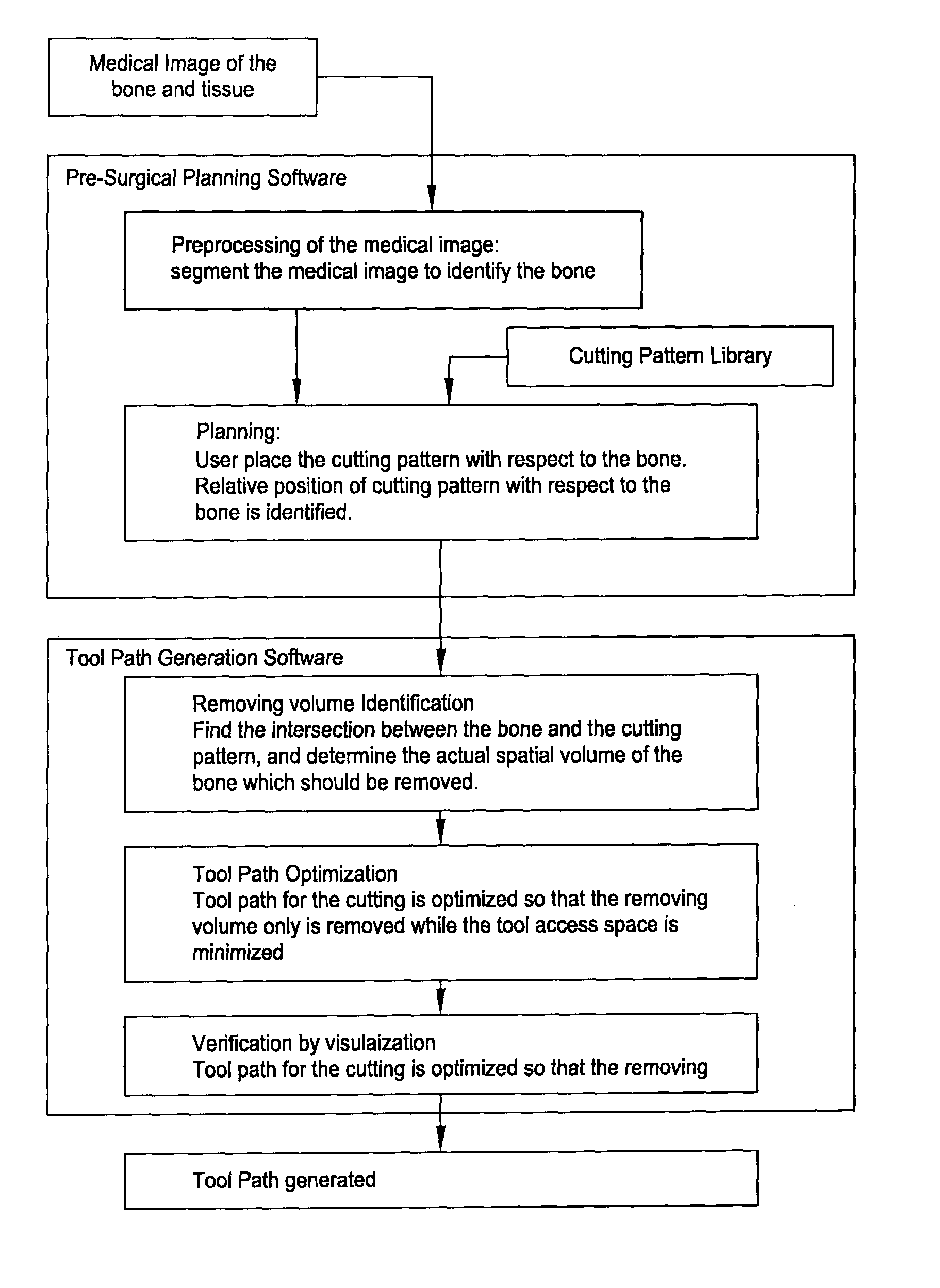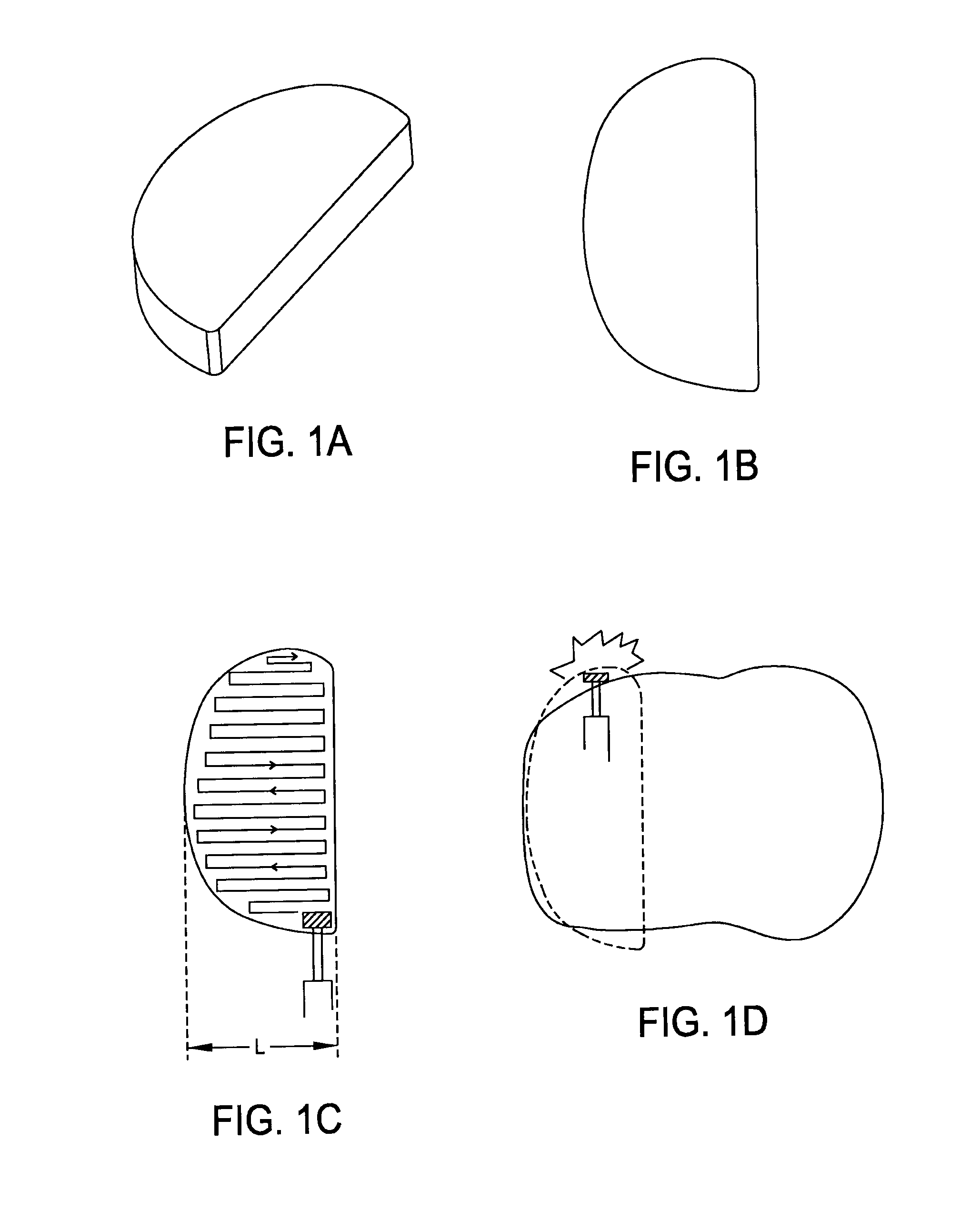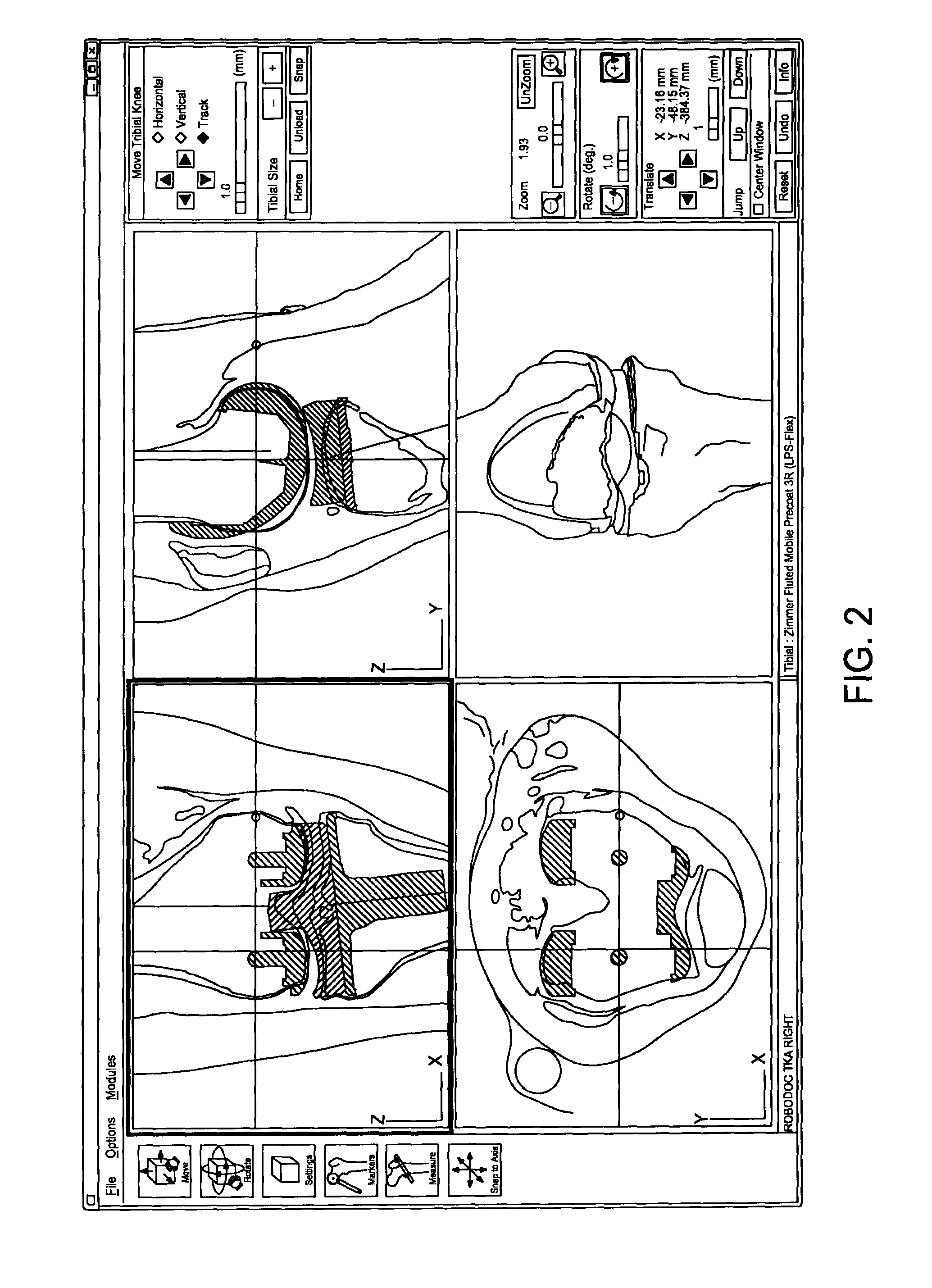Method and apparatus for generating a tool path for a robotic orthopedic surgical procedure
a robotic and surgical technology, applied in the field of robotic orthopedic surgical planning software, can solve the problems of reducing the surgical access required, affecting the surgical outcome, so as to minimize the need for surgical access and minimize the trauma of soft tissu
- Summary
- Abstract
- Description
- Claims
- Application Information
AI Technical Summary
Benefits of technology
Problems solved by technology
Method used
Image
Examples
Embodiment Construction
[0054]The present invention provides a novel method and apparatus for generating an improved tool path for an implant which minimizes soft tissue trauma, e.g., by utilizing a pre-determined tool path but also protecting the soft tissues behind or around the bone, and also minimizing the required surgical access.
[0055]In accordance with the present invention, this is done by using pre-operative surgical planning software (FIG. 2) to access an image of the bone which is to be cut and to access an image of the desired cut (i.e., the pre-determined cutting pattern) which is to be made in the bone. The pre-determined cutting pattern is a combination of the volume or surface which will be cut by the surgical robot, as well as containing a template of the pre-determined tool path for that volume or surface. The image of the cutting pattern is placed over the image of the bone. Then the intersection of the cutting pattern and the bone is calculated. Based upon this intersection, a tool path...
PUM
 Login to view more
Login to view more Abstract
Description
Claims
Application Information
 Login to view more
Login to view more - R&D Engineer
- R&D Manager
- IP Professional
- Industry Leading Data Capabilities
- Powerful AI technology
- Patent DNA Extraction
Browse by: Latest US Patents, China's latest patents, Technical Efficacy Thesaurus, Application Domain, Technology Topic.
© 2024 PatSnap. All rights reserved.Legal|Privacy policy|Modern Slavery Act Transparency Statement|Sitemap



